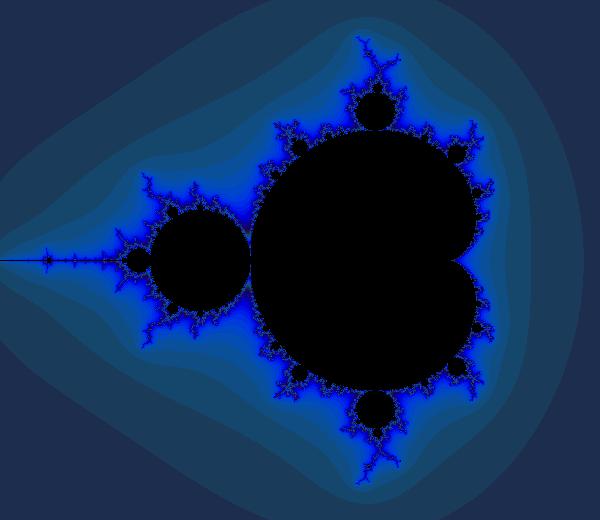diff options
Diffstat (limited to 'tensorflow/docs_src/tutorials/non-ml/mandelbrot.md')
| -rw-r--r-- | tensorflow/docs_src/tutorials/non-ml/mandelbrot.md | 116 |
1 files changed, 0 insertions, 116 deletions
diff --git a/tensorflow/docs_src/tutorials/non-ml/mandelbrot.md b/tensorflow/docs_src/tutorials/non-ml/mandelbrot.md deleted file mode 100644 index 1c0a548129..0000000000 --- a/tensorflow/docs_src/tutorials/non-ml/mandelbrot.md +++ /dev/null @@ -1,116 +0,0 @@ -# Mandelbrot Set - -Visualizing the [Mandelbrot set](https://en.wikipedia.org/wiki/Mandelbrot_set) -doesn't have anything to do with machine learning, but it makes for a fun -example of how one can use TensorFlow for general mathematics. This is -actually a pretty naive implementation of the visualization, but it makes the -point. (We may end up providing a more elaborate implementation down the line -to produce more truly beautiful images.) - - -## Basic Setup - -We'll need a few imports to get started. - -```python -# Import libraries for simulation -import tensorflow as tf -import numpy as np - -# Imports for visualization -import PIL.Image -from io import BytesIO -from IPython.display import Image, display -``` - -Now we'll define a function to actually display the image once we have -iteration counts. - -```python -def DisplayFractal(a, fmt='jpeg'): - """Display an array of iteration counts as a - colorful picture of a fractal.""" - a_cyclic = (6.28*a/20.0).reshape(list(a.shape)+[1]) - img = np.concatenate([10+20*np.cos(a_cyclic), - 30+50*np.sin(a_cyclic), - 155-80*np.cos(a_cyclic)], 2) - img[a==a.max()] = 0 - a = img - a = np.uint8(np.clip(a, 0, 255)) - f = BytesIO() - PIL.Image.fromarray(a).save(f, fmt) - display(Image(data=f.getvalue())) -``` - -## Session and Variable Initialization - -For playing around like this, we often use an interactive session, but a regular -session would work as well. - -```python -sess = tf.InteractiveSession() -``` - -It's handy that we can freely mix NumPy and TensorFlow. - -```python -# Use NumPy to create a 2D array of complex numbers - -Y, X = np.mgrid[-1.3:1.3:0.005, -2:1:0.005] -Z = X+1j*Y -``` - -Now we define and initialize TensorFlow tensors. - -```python -xs = tf.constant(Z.astype(np.complex64)) -zs = tf.Variable(xs) -ns = tf.Variable(tf.zeros_like(xs, tf.float32)) -``` - -TensorFlow requires that you explicitly initialize variables before using them. - -```python -tf.global_variables_initializer().run() -``` - -## Defining and Running the Computation - -Now we specify more of the computation... - -```python -# Compute the new values of z: z^2 + x -zs_ = zs*zs + xs - -# Have we diverged with this new value? -not_diverged = tf.abs(zs_) < 4 - -# Operation to update the zs and the iteration count. -# -# Note: We keep computing zs after they diverge! This -# is very wasteful! There are better, if a little -# less simple, ways to do this. -# -step = tf.group( - zs.assign(zs_), - ns.assign_add(tf.cast(not_diverged, tf.float32)) - ) -``` - -... and run it for a couple hundred steps - -```python -for i in range(200): step.run() -``` - -Let's see what we've got. - -```python -DisplayFractal(ns.eval()) -``` - - - -Not bad! - - |
